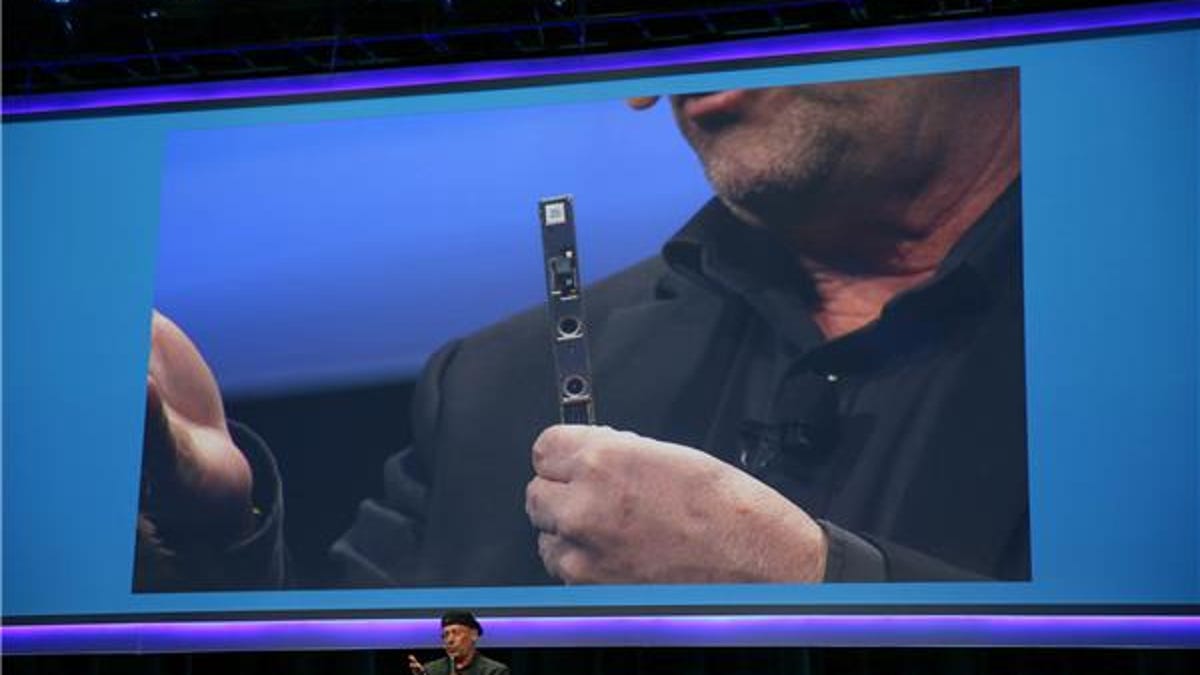3D camera kicks off Intel's 'Real Sense' perceptual computing
The chipmaker uses most of its presentation at the Consumer Electronics Show to demonstrate applications of a thin 3D camera.

Intel on Monday unveiled a 3D camera, with hardware about the size of an index finger but thinner than two quarters, as the first product in its new "Real Sense" brand of perceptual computing products.
The chipmaker unveiled the technology and its applications at a press conference in Las Vegas as part of the 2014 Consumer Electronics Show. It has fenced out the world of "perceptual computing" as technology it wants to develop that will utilize things like gestures, voice recognition, and facial recognition to make devices more natural and intuitive to use.
Mooly Eden, Intel's senior vice president for perceptual computing, said "Real Sense" is working with Asus, Acer, NEC, Dell, HP, Fugitsu, and Lenovo to integrate the technology into their products, including a two-in-one computer, he said.
The company demonstrated ways the 3D camera can be applied. It can ease 3D printing, as Intel will work with company 3D Systems, a leader in the 3D printing industry, to do. In video conferencing and video blogging, the camera can recognize different foregrounds and backgrounds and replace whichever with different images, like a green screen would. It can also be used for simple screen navigation, pinching in the air and sweeping your hand in one direction to move a screen forward and back, or it can track face position to move Google Earth images in the direction the user's face turns.
However, most of the applications for the 3D camera that Intel demonstrated already exist in some form or other through other technologies.
At the press conference, the company alluded to announcements that may come at Intel CEO Brian Krzanich's CES keynote address at 6:30 p.m. PT, such as the two-in-one computer.

